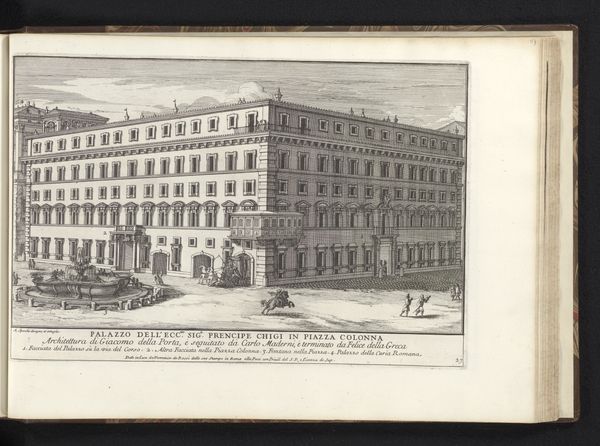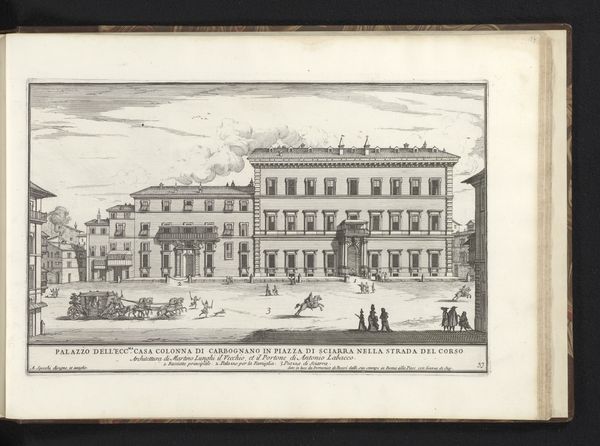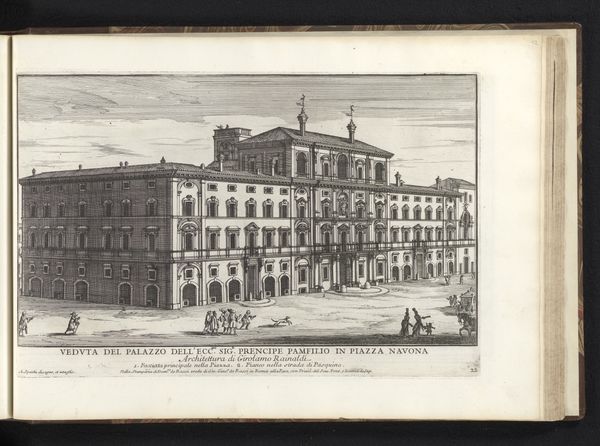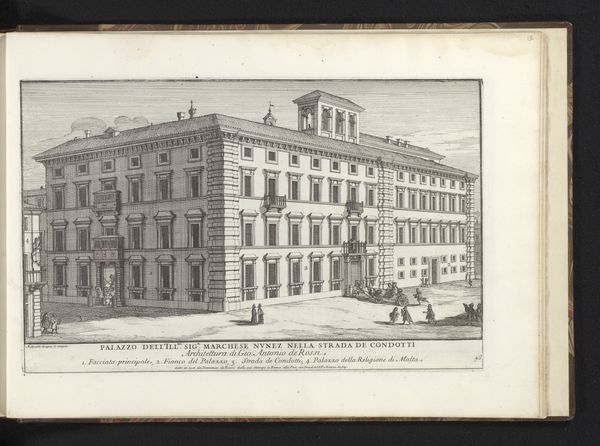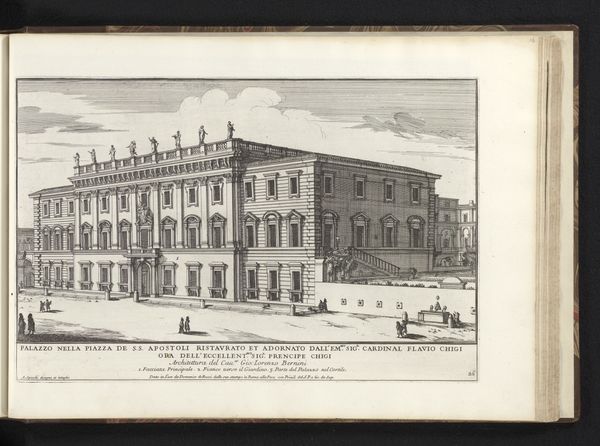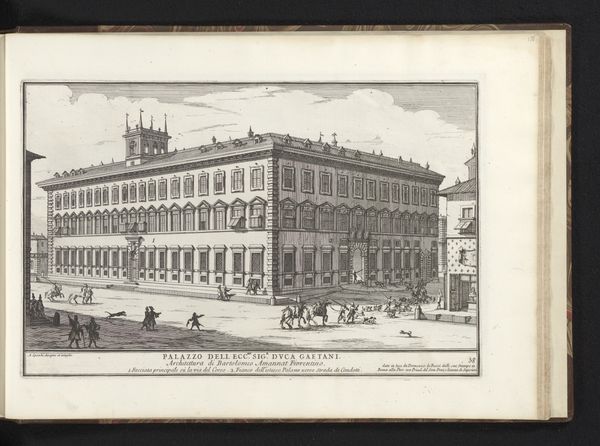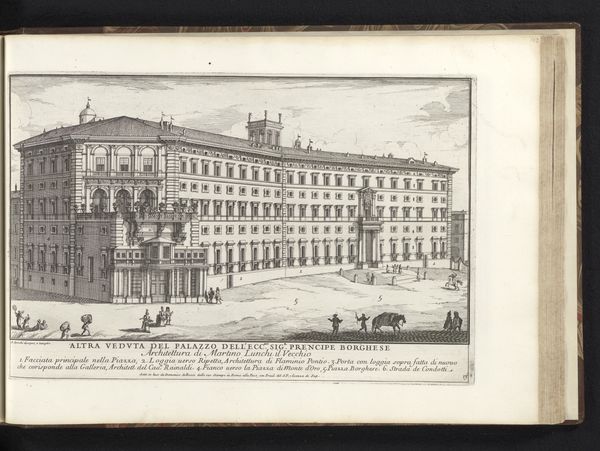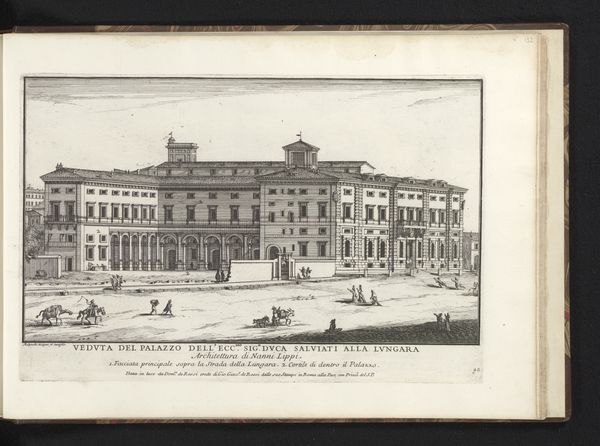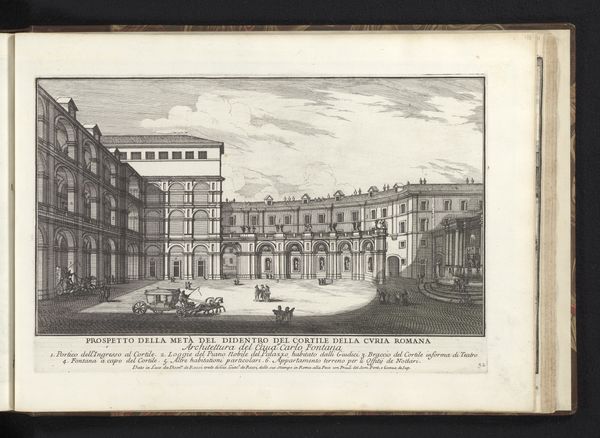
print, engraving, architecture
#
baroque
# print
#
cityscape
#
italian-renaissance
#
engraving
#
architecture
Dimensions: height 215 mm, width 330 mm
Copyright: Rijks Museum: Open Domain
Curator: Immediately, the crisp lines of this print evoke the formal elegance of the Baroque era. Editor: It feels strangely detached, almost sterile. A carefully cataloged monument, not a living space. Curator: Precisely. This engraving, titled "Palazzo Madama te Rome," was created around 1699 by Alessandro Specchi. We're seeing a deliberate record of architectural detail, meticulously rendered using engraving techniques on a printed medium. This wasn’t just about aesthetics; it was about dissemination of knowledge and celebrating material production. Editor: And solidifying power, don't you think? The grand facade dominating the piazza...who resided there? Whose labor built that, and what kind of social relations does its existence imply? It is far removed from today’s society and seems somewhat alienating because of it. Curator: Palazzo Madama, as depicted, represented more than just the aristocracy who owned the Palazzo. Prints like this facilitated the building's "consumption" beyond its physical location. For those who would have seen the print in contrast with those that labored there is a striking juxtaposition to contemplate. The print medium brings that element to the fore. Editor: It is that element of class you speak about where this rendering starts to reveal an inherent hierarchy—from the patron who commissioned the work, to the artist, down to the people who merely exist as small figures in the plaza, animating the grand design. It’s a document of social stratification as much as it is a portrayal of architecture. It lacks an intersectional approach on first inspection, yet invites exactly that from modern viewers today. Curator: It is worth pointing out that engravings such as these weren't simple reproductions. They involved skilled artisans translating three-dimensional forms into a two-dimensional medium. Editor: A labor of devotion, crafting a symbol for a specific social and economic agenda. Seeing this depiction now makes you wonder where the other buildings have led us. Curator: Absolutely, and appreciating its production provides access to new questions when experiencing spaces today. Editor: Indeed. And thinking critically about those underlying narratives, those untold stories within these architectural prints, keeps their historical relevance sharp and, dare I say, necessary.
Comments
No comments
Be the first to comment and join the conversation on the ultimate creative platform.
